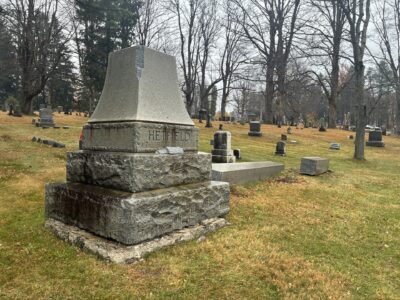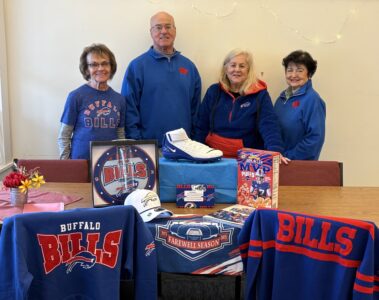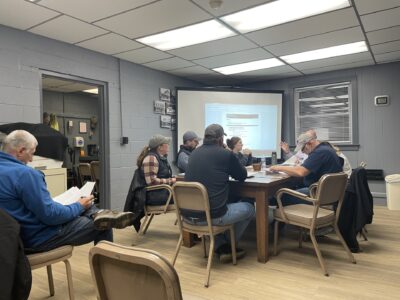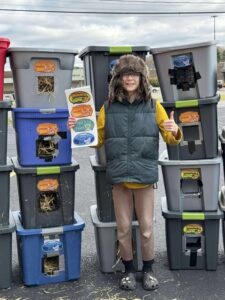July Decision Doesn’t End Carroll Landfill Lawsuit
After nearly 20 years, the last claim in the legal battle over the 2007 Carroll landfill regulation refuses to be laid to rest.
Years in court have ruled out using the 54 acres owned by the Jones family as a landfill. The open question was whether or not the 2007 law banning landfills in Carroll is a regulatory taking – and if it is, whether or not the town has to compensate the Jones family and Sealand Waste for the money they claim to have lost. State Supreme Court Justice Grace Hanlon recently ruled on two motions in the case – one on behalf of the landfill’s owners that the town of Carroll should compensate the landfill owners because the 2007 law is an unconstitutional taking of the value of their property and one on behalf of the town seeking to have the landfill owners’ takings claim dismissed.
“The submitted affirmations contain speculative and contradictory information, which has raised a question of fact, which prevents this court from granting summary judgement on behalf of the town of Carroll,” Hanlon wrote in her ruling. “The town of Carroll’s motion is denied. … The plaintiff’s motion for summary judgement must be denied, since the plaintiff has failed to show a per se taking or a taking under the Penn Central factors.”
THE ARGUMENTS
Daryl Brautigam of Brautigam and Brautigam LLP in Fredonia and Alan J. Knauf, of Knauf Shaw LLP in Rochester argue in favor of the Jones family and Sealand Waste argue that a regulatory taking is found where a government action destroys even a single “stick” in a property-owner’s bundle of rights. The state Court of Appeals has already found that Plaintiffs had a vested property right to operate the landfill on the entire property. Ending that property right, they say, constitutes a taking.
The attorneys further argued that the property is not capable of a reasonable return for any other use permitted in the Agriculture-Residential 1 zoning district.
Brautigam and Knauf argue that the state Court of Appeals’s 2010 determination that the Use Variance to operate the landfill in 1989 outlasts the 2007 passage of anti-landfill town laws. They then argue that the analysis used in takings clause cases, courts have held a taking may occur even where the property’s value has not been reduced to $0, and courts look to the available uses remaining when assessing a property’s post-regulation value. The Jones family and Sealand Waste used the property as a landfill according to the use variance granted by the town but find future uses limited by the existence of the landfill.
Town officials had argued that bringing to an end a use variance that allowed operation of a landfill on the Jones-Carroll site with the 2007 town law banning landfills in the town doesn’t mean the Jones family or Sealand Waste, which wanted to expand the landfill, had land essentially taken through the town’s regulation. The court had ruled a retroactive zoning ordinance as was passed by the town in 2005 impacted the Joneses’ vested interest in the variance. The 2007 law is described as a health and safety ordinance by the town’s attorneys, and they say that has a different impact on the vested interest the landfill operators had through a 1989 use variance that allowed the landfill to operate.
Attorney Jeff Stravino argued the Jones family and Sealand haven’t proven the property has been stripped of all economically beneficial use or is otherwise not capable of alternative uses. The Joneses’ and Sealand have argued in court filings that building a residential home is unprofitable, installing a septic and well system is too expensive and a solar project would not work on the site. Stravino argues that there are other suitable uses for the site, including seasonal and year-round residential housing, including single-family, modular, and manufactured homes, and recreational vehicles; recreational uses, including hunting, hiking, and camping; and storage facilities, including garages, pole barns, and yard storage. He also argues there is no regulatory taking since the property’s value hasn’t decreased much over the past 18 years.
NOT THE END OF THE LINE
Hanlon’s decision would have seemed to end the legal battle, but that’s not the case.
Hanlon’s decision only puts to rest Motions 11 and 12 in the case. Hanlon’s ruling, according to Brautigam and Knauf, didn’t deal with an argument they made that a use variance granted by the Carroll Zoning Board of Appeals precludes the town from arguing there is no regulatory taking. Brautigam and Knauf have filed a thirteenth motion asking Hanlon to allow them to reargue the point through existing briefs and arguments.
“Plaintiffs now move to Reargue their Motion for Summary Judgment pursuant to CPLR § 2221(d), based on matters of fact and law overlooked or misapprehended by the court,” Brautigam and Knauf argued in their affirmation. “Plaintiffs, in their Motion for Summary Judgment, argued that the defendants should have been collaterally estopped from arguing the Plaintiffs’ Property could still realize a reasonable return through uses other than landfilling, and therefore there was a taking since Local Law No. 1 of 2007 banned that use. However, this Court’s Decision did not address the collateral estoppel issue. The Town of Carroll ZBA, which is in privity with Defendants, granted Plaintiffs a Use Variance, recognizing that the Property was incapable of producing a reasonable return unless it was used as a landfill. The Decision however overlooked these matters of fact. The Decision also overlooked or misapprehended controlling law that established that the Use Variance had conclusive effect for the sake of collateral estoppel; thus, the Defendants could not argue against this already settled issue. Moreover, the Decision misapprehended the issue of law regarding the virtually identical nature of the regulatory takings test and the use variance standard.”





